CCNF at the 2022 AOA National Fleece Show: Adversity On the One Side, Triumph On the Other
The past year has been challenging at times here at Cas-Cad-Nac Farm. Though having come through it all, we are grateful to find ourselves changed for the better and now dealing from a position of strength and clarity. Last fall, after several months of running the farm shorthanded, we concluded the search for our new Farm Manager. After having 30+ candidates submit resumes and sitting with roughly 15 different people for interviews — some in-person, many virtually — with candidates from all across the country, we hired the super-competent Arlis Cummings, Jr. as our new guy. Though Arlis and his wife, Kimber, were just finally able to move into the house we have for them here on the farm last week — it had required a lot of TLC to bring the house back to its former self — Arlis had nonetheless hit the ground running as soon as he started. It was admittedly a fairly steep learning curve for someone with no prior camelid experience, but an open, sharp mind, good cheer, and an irrefutable work ethic cover a lot. In fact, just weeks after he started here, Arlis was holding the fort by himself for the better part of a month while we went on a long-planned trip to belatedly celebrate our 25th wedding anniversary. The early signs were that we had found someone genuinely extraordinary and of the highest character. The nine months since have only served to reinforce that belief.
All throughout the past year, we have also continued to deal with the ups and downs of the Covid pandemic, just like the rest of the world. In spite of the relatively high acceptance of the Covid-19 vaccines here in Vermont from the very early going, we have still dealt with periodic spikes in infections statewide. And because the fates seem to have a deliciously sardonic sense of humor, after 2+ years of taking extreme precautions both for our household and our farm’s entire staff (the farm was fully closed to visitors throughout most of 2020 and 2021, and our first time back at any public venue for an alpaca show was not until November of last year), our luck ran out, and yours truly came down with a pretty decent case of Covid, running a fever for 8 days, despite being 3x-vaccinated. So much for the hypothesis that, having grown up in Guatemala as a young child, I had been gifted some vaunted immune system.
None of which would have really been more than an asterisk and a tedious pain in the ass…except that I got the ‘Vid just 48 hours before shearing was scheduled to start. My wife was most displeased. Those are the only 4 days of the calendar year on this farm where it is absolutely, without exception, an all-hands-on-deck affair, and instead of being able to participate fully, I was laid low, operating at maybe 60% power, and unable to get near anybody else for fear of passing it on (these were the halcyon days of BA.2 Omicron wave, btw: thank goodness that whole thingy is behind us now and it was really nothing to worry about in the first place). It meant I spent most of the following week in isolation and all of my responsibilities relating to logistics and planning (read: acquiring food for a crew of eight people for 4 consecutive days), to say nothing of my normal roles during shearing, such as helping to shuttle animals to and from the Arena, as well as being the lead member of the animal takedown crew, all had to fall to others on our team. The only time I was able to “help” during shearing was the 1 1/2 days I drove my carcass up to the Arena fully masked (have N-95, can party) and appropriately drugged to suppress my fever, so that I could at least point animals out to Arlis by name (he knows many by now, but that’s a big class of kids when you’re starting from zero) from a distance when it was their turn to be shorn, thus trying to speed things along just a bit. Thankfully from Arlis on down, we are blessed with an amazing staff here. Jen and the entire crew just stepped it up another notch, picked up my slack, and got done what needed to get done. Kimber chipped in too, saving our bacon and picking up food for everybody during the shearing days on multiple occasions.
Ultimately resigned to true inactivity after my body reprimanded me for thinking otherwise, I watched far more TV over 10 days (Pennyworth on HBOMax was fun) than I would normally have watched in a month or two and Jen and I both got way too familiar with the home Covid tests. Also, can I pause here to say that I’m not so sure that those forehead thermometers that have become rather ubiquitous over the past couple of years are so great for those of us with slight OCD tendencies?
“Yes, my temperature was 102.7 a minute ago…but what is it now?!” I digress.
So in spite of being thrown a nasty, dipping curveball, we made it through shearing and by some miracle — plus, you know, yay, science and medicine — no one else on the farm got sick. As I write this, I am trying to imagine the cries of derision (to say nothing of the rich irony) that we would have rightfully heard from our other fellow alpaca breeders that rely upon our shearer, Matt Best, had we been the farm that gave him Covid and took him out of action after all of our decidedly public grandstanding about pandemic safety? Oof, that would have been ugly. Pinch of salt, knocks on wood, rubs rabbit foot, etc…
With shearing completed, the next big step here in late April/early May has always been to powerwash and disinfect the pens at the Arena where the maternity groups end up birthing out. Meanwhile, Jen and Arlis began running fecal tests on all of the expectant dams. so that they could be dewormed, as necessary, before being moved over in groups of 14 to 15 females (organized by due dates) to those newly cleaned pens. We came into this year’s birthing season with roughly 40 due mamas (vs. 70+ in 2021), having curtailed our breeding activity last summer, so as not to throw the future new Farm Manager-to-be-named-later too far into the deep end their first time around. Even so, when all of those females were bred between June 15th and August 9th of last year, that still created plenty of opportunities for chaos. And after a brief pause of 3 weeks or so, the new crias did indeed start to fly.
As Jen showed Arlis the ropes of how we go through the process of welcoming new members of the herd — though it should be noted that Arlis had likely already been delivering horses and cattle for years before we even knew what an alpaca was, much less how to care for one — she simultaneously began to go through the mountains of rolled fleeces from shearing, carefully sorting through the different colors, ages, and genders to select her entries for the National Fleece Show, to be held this year in Burlington, KY. To be clear: while my better half and I have always made the breeding decisions here together, where the preparation and showing of our breeding program’s fleeces is concerned, that is exclusively Jen’s work and expertise. Just as explaining it all after the fact to the outside world is mine (though one would be hard-pressed to ever associate the word ‘expertise’ with this drivel). Unable to contain her enthusiasm, with a crack new Farm Manager more than holding up his responsibilities in the barns, and chasing a bit of history (more on that below), Jennifer ended up selecting 68 total fleeces to send to Kentucky. We all scratch our competitive itches in different ways.
After a brief flirtation with the idea of a road trip, we made our peace with the reality that with the birthing and breeding seasons both in full swing come late June and early July, that we would be shipping entries to alpaca Show Superintendant extraordinaire Judy Shroeder in advance of Nationals, rather than attending in person. So after weeks of fastidious work (Jen prepped this year’s fleeces to among other things, the 53 hour unabridged audiobook version of Shogun, along with The Great Gatsby, and Wuthering Heights), with each show fleece requiring roughly an hour of preparation, we made multiple runs to our local FedEx shipping center, dropping off the sturdy but awkwardly-sized 24′ x 24′ boxes as they became ready, while also being cognizant of the chaos and risks of shipping in or around the July 4th holiday weekend. In the end, after being temporarily waylaid by some neonates here on the farm that required a little extra TLC, my better half got it all done though, with a day to spare before deadline, no less.
Those of you who have had the misfortune of reading this blog and the physical newsletter that proceeded it over the years, will know that we have always held that consistently producing quality animals over time, while advancing those alpacas’ qualities in each subsequent generation, is the mark of a truly successful breeding program. Anyone can produce a special, singular animal as a one-off, and while there’s certainly nothing wrong with that, we were always in this for the long haul, chasing the long upward curve. That’s very cool what we did last year and the year before that: now what are we going to do next?
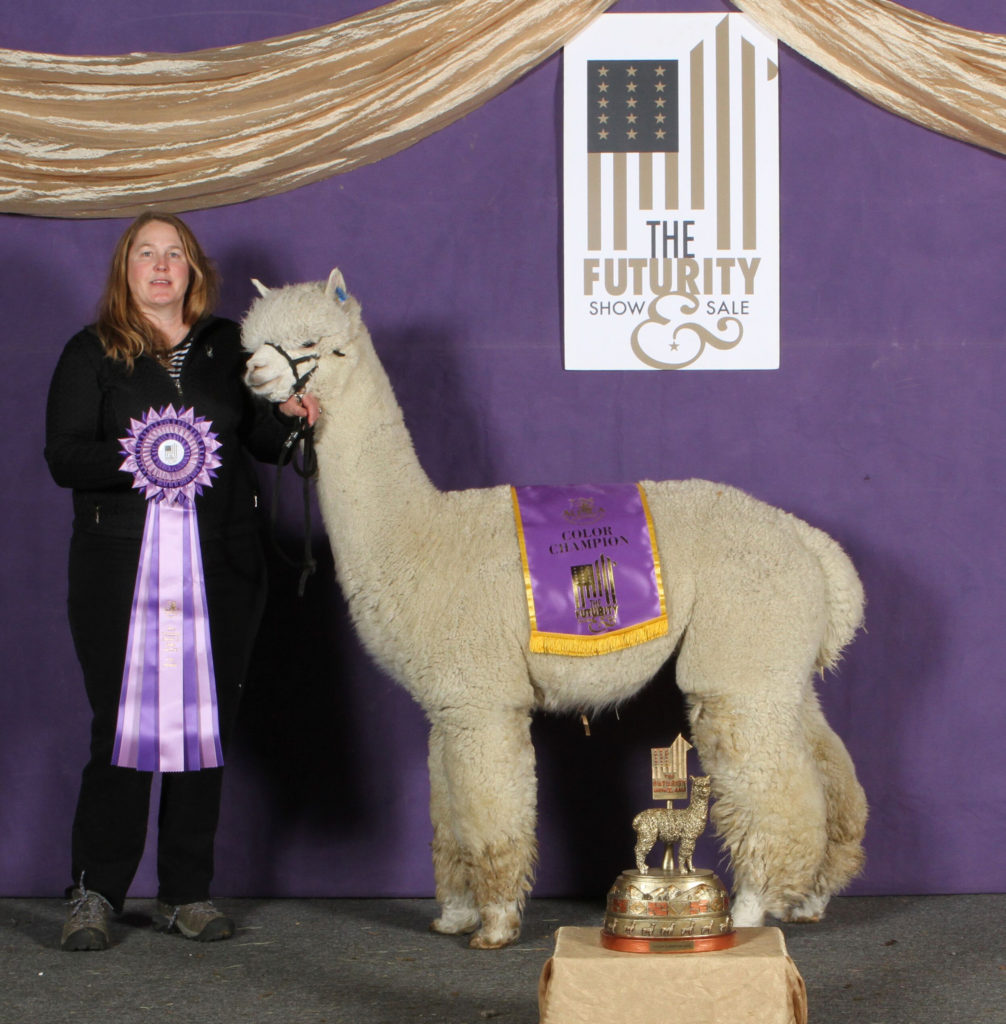
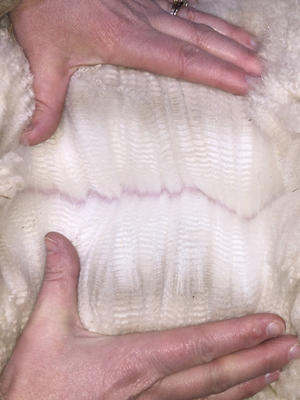
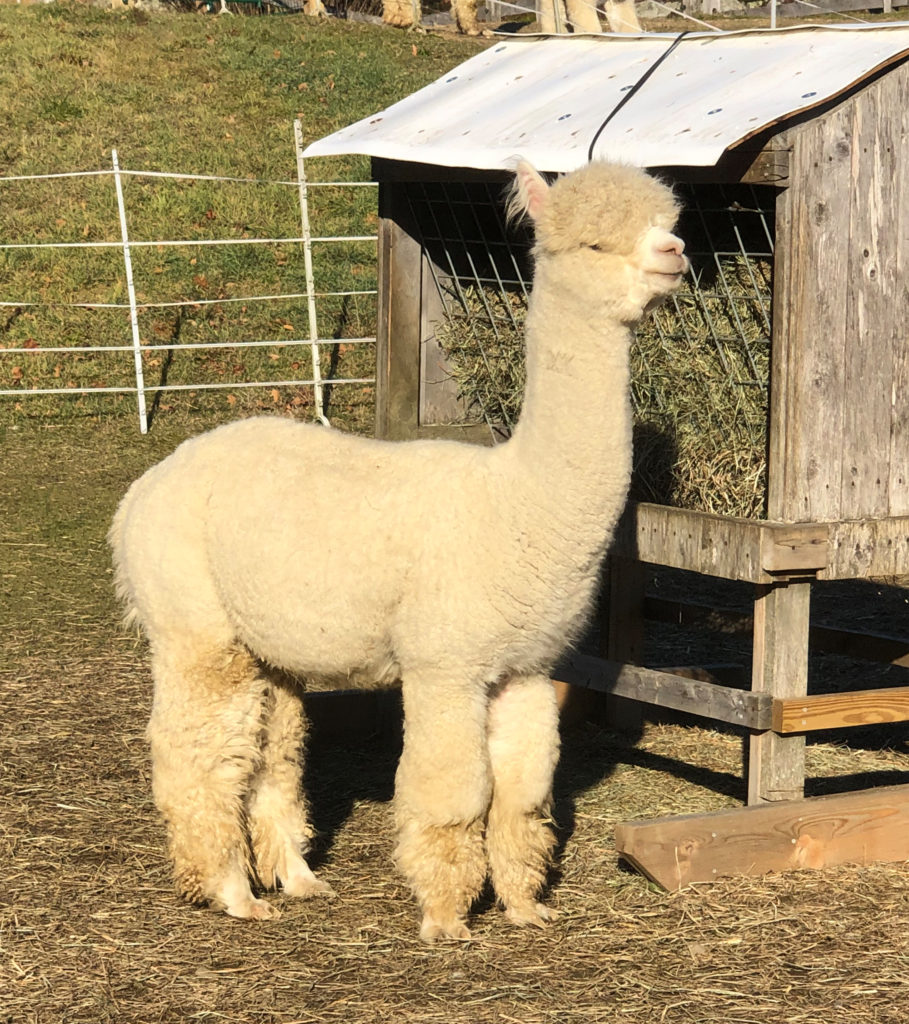
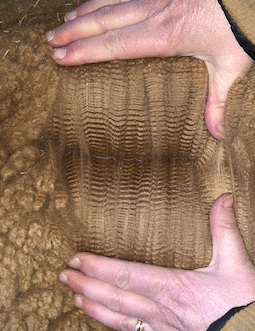
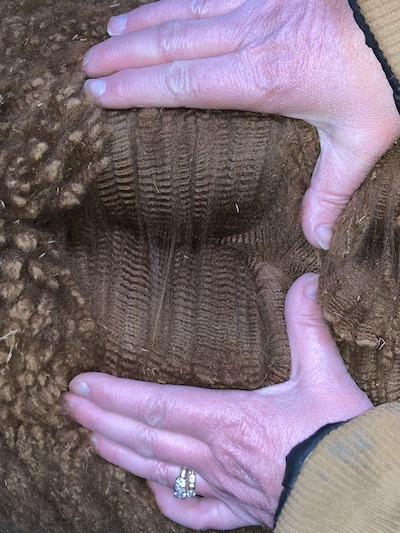
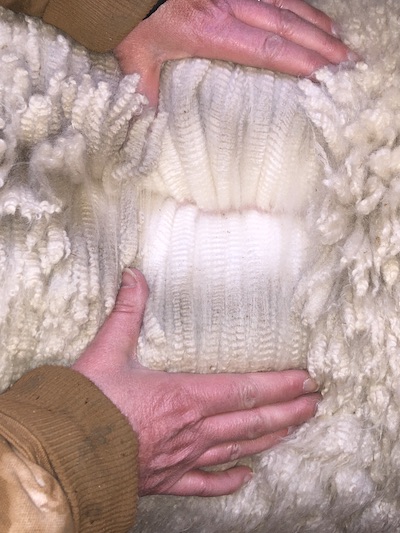
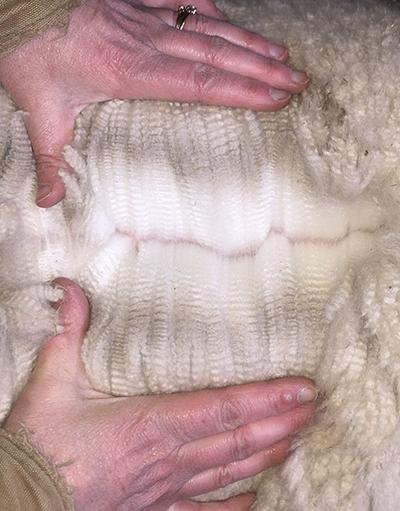
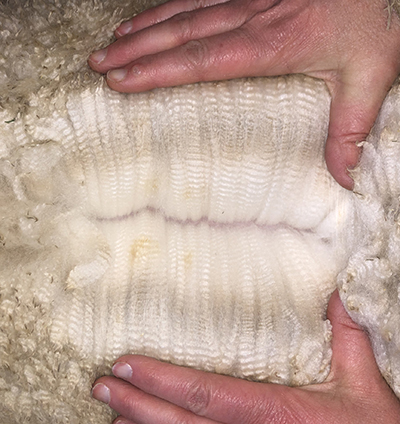
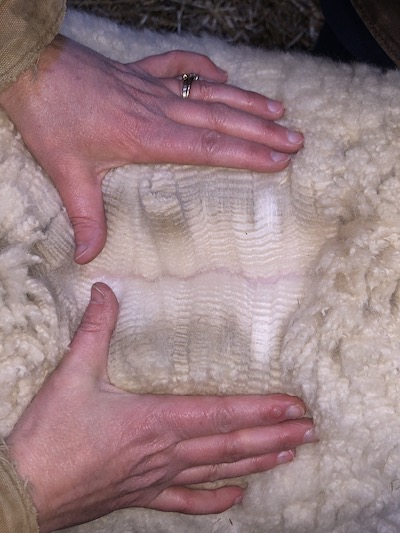
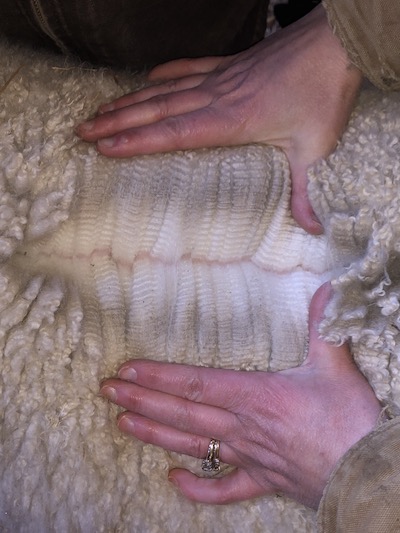
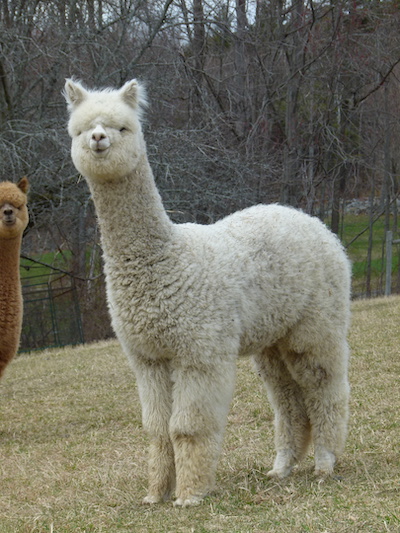
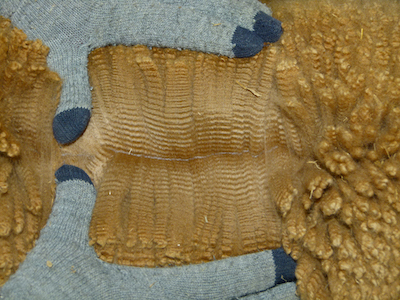
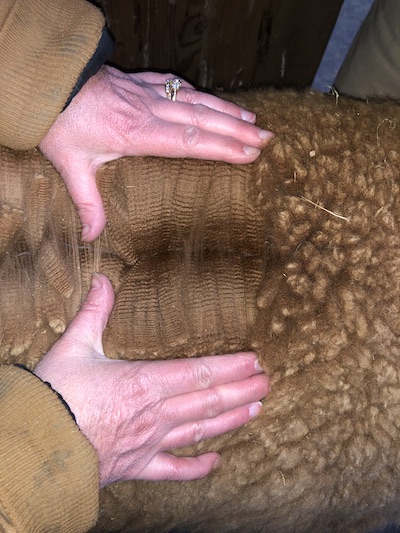
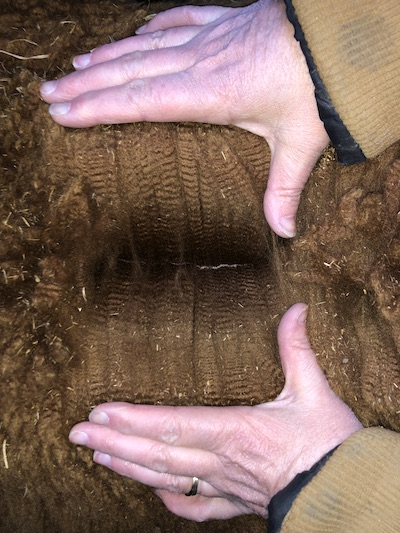
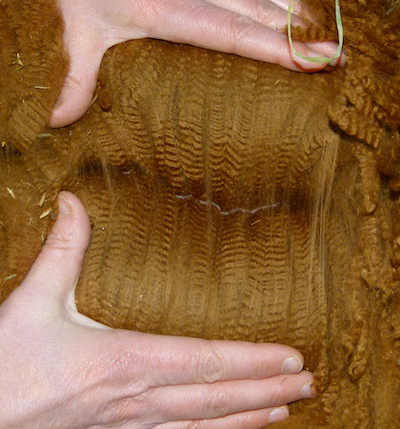
As ever, fleece shows, particularly when they are larger and thus a legitimately representative sample of the US domestic alpaca herd, are a bias-free (or at least as bias-free as possible) litmus test of a breeding program’s mojo over time, and that’s one big reason why this year’s results have ended up feeling like a well-earned exclamation point: for 2022 marked the 10th consecutive year that Jennifer Lutz and Cas-Cad-Nac Farm have won the AOBA/AOA Heirloom Huacaya Fleece Cup! My wife was raised not to be a braggart in a hard-working blue-collar family, so I will toot her horn for her: it is a genuinely remarkable accomplishment, built on trial and error and years of blood, sweat, and tears – congratulations, my love! And here is another big reason we take those accolades to heart: do you know how many of the various different judges hired to work the National Fleece Shows over the past decade ever knew that those were our fleeces as they judged them? Exactly zero. Whether our fleeces were winning Championships, placed 1st or 6th, or even failed to ribbon — and you win some and you lose some, that’s the game — they have done so solely and undeniably on the virtues of their merit and quality, not because Jen or Ian were on the end of a lead line or because of some magic fairy dust that Jennifer sprinkled on them beforehand (Plus, do you have any idea what recent inflationary pressure has done to the cost of fairy dust? It’s outrageous). So while the Cup, the banners, the 1sts, and specialty awards will appear below, it’s worth looking a little deeper into the numbers to understand what we mean by consistency as it relates to our 73 entries (68 fleeces plus 5 additional entries in the Get of Sire or Produce of Dam classes) at this year’s show alone: 21 of them placed 1st in their respective classes, 23 of them placed 2nd (with 5 of those in classes won by other CCNF entries), 13 of them placed 3rd, 9 of them placed 4th, 3 of them placed 5th, 2 of them placed 6th, and only 2 of them did not ribbon. Quality and consistency, from an overall group of entries that represented more than 25% of our entire herd that was shorn this past April. Probably not a fluke.
A huge thank you to the AOA Judges in Kentucky, and of course, most especially to Judy Schroeder and her army of volunteers who made running the National Fleece Show at all possible in the first place. We are fully cognizant that from an organizer’s point of view — and we’ve been there too — that an entry the size of ours is both equal measure blessing and curse, so thanks again to you all from the bottom of our collective heart!
CCNF 1sts, Championships, and specialty awards listed below by animal. Thanks as ever for reading, and again, if you’ve truly made it this far, we really should have a word about your priorities in life. Please, everyone, stay safe and be well. Onward and upward we go.
2022 AOA National Fleece Show, Burlington, KY – CCNF Championships, 1st Place Winners, & Specialty Awards
Cas-Cad-Nac Farm LLC – 2022 AOA Heirloom Breeder Cup, Huacaya Fleece
CCNF Snow King (CCNF Elizabeth x MFI & KVR’s Mint Mo Money) – Judge’s Choice Huacaya Male
CCNF Priam (CCNF Pristine x Snowmass Matrix Majesty) – Spirit of the Fiber Industry Award, Huacaya Male
CCNF Prescience (CCNF Prestige x CCNF Bataclan) – Best Hand, Huacaya Female
CCNF Sapphire (CCNF Gimlet x CCNF Priam) – Best Brightness, Huacaya Female
CCNF Rosalva (CCNF Eternal Rose x CCNF Elixir) – 1st Place, Huacaya Produce of Dam (CCNF Rosalia, CCNF Rosanna)
CCNF Val-Alpine (CCNF Nymeria x Red Granite’s Val D Lsere) – Champion Brown Huacaya Female
CCNF Antigone (CCNF Dreadnought’s Adromeda x Irish Meadow’s Elite Max) – Champion Fawn Huacaya Female
CCNF Pacer (CCNF Pachelbel x CCNF Bataclan) – Champion Light Huacaya Male
CCNF Rosalia (CCNF Rosalva x Irish Meadow’s Elite Max) – Champion Light Huacaya Female
CCNF Carillon (CCNF Campana x Irish Meadow’s Elite Max) – Champion White Huacaya Female
CCNF Tenacity (CCNF Reina x Bataclan) – Champion White Huacaya Male
CCNF Valiant (CCNF Valyria x Irish Meadow’s Elite Max) – Champion Multicolor Huacaya
CCNF Cosette (CCNF Nikita x CCNF Reign Maker) – Reserve Champion Brown Huacaya Female
CCNF Sovereign-Legacy (CCNF Luna Majesty x CCNF Elixir) – Reserve Champion Fawn Huacaya Male
CCNF Kalani (Gemstate’s Kashmira x CCNF Bataclan) – Reserve Champion Light Huacaya Female
CCNF Snow King (CCNF Elizabeth x MFI & KVR’s Mint Mo Money) – Reserve Champion Huacaya Male
CCNF Cosette (CCNF Nikita x CCNF Reign Maker) – 1st Place, Huacaya Brown Female Yearlings
CCNF Lilah’s Storm Front (CCNF Lilah x CCNF Dark Storm) – 1st Place, Huacaya Brown Male Juveniles
CCNF Val-Alpine (CCNF Nymeria x Red Granite’s Val D Lsere) – 1st Place, Huacaya Brown Female Juveniles
CCNF Antigone (CCNF Dreadnought’s Andromeda x Irish Meadow’s Elite Max) – 1st Place, Huacaya Medium Fawn Female Juveniles
CCNF Okoye (CCNF Capuchin x CCNF Elixir) – 1st Place, Huacaya Dark Fawn Female Juveniles
CCNF Sovereign-Legacy (CCNF Luna Majesty x CCNF Elixir) – 1st Place, Huacaya Fawn Male Adult
CCNF Triumvirate (CCNF Luna Majesty x CCNF Elixir) – 1st Place, Huacaya Fawn Male Two-Year-Olds
CCNF Eternal Revel (CCNF Eternal Rose x CCNF Dreadnought) – 1st Place, Huacaya Light Male Adult
CCNF Kalani (Gemstate’s Kashmira x CCNF Bataclan) – 1st Place, Huacaya Light Female Two-Year-Olds
CCNF Marius United (CCNF Majesty United x CCNF Elixir) – 1st Place, Huacaya Beige Male Yearlings
CCNF Pacer (CCNF Pachelbel x CCNF Bataclan) – 1st Place, Huacaya Light Male Juveniles
CCNF Rosalia (CCNF Rosalva x Irish Meadow’s Elite Max) – 1st Place, Huacaya Beige Female Yearlings
CCNF Abraxas (CCNF Ajoyani x CCNF Elixir) – 1st Place, Huacaya White Male Two-Year-Olds
CCNF Bolivar (CCNF Bellicosa x CCNF Bataclan) – 1st Place, Huacaya White Male Juveniles
CCNF Carillon (CCNF Campana x Irish Meadow’s Elite Max) – 1st Place, Huacaya White Female Yearlings
CCNF Khiara (CCNF Khione x CCNF Sucrose) – 1st Place, Huacaya White Female Adult
CCNF Priam (CCNF Pristine x Snowmass Matrix Majesty) – 1st Place, Huacaya White Male Mature
CCNF Snow King (CCNF Elizabeth x MFI & KVR’s Mint Mo Money) – 1st Place, Huacaya White Male Adult
CCNF Tenacity (CCNF Reina x Bataclan) – 1st Place, Huacaya White Male Yearlings
CCNF Valiant (CCNF Valyria x Irish Meadow’s Elite Max) – 1st Place, Huacaya Multicolor Yearlings
Follow me on Twitter at @CCNFAlpacas and on Instagram at ccnfalpacas. You can find also find and follow Cas-Cad-Nac Farm Alpacas on Facebook here.

Thanks for the update!
May your next year go more smoothly!
Congratulations on the fleece show!
Thanks Sue!
Awesome! Congratulations! Very well deserved. Hope things settle down a bit and we can find some time to get together.